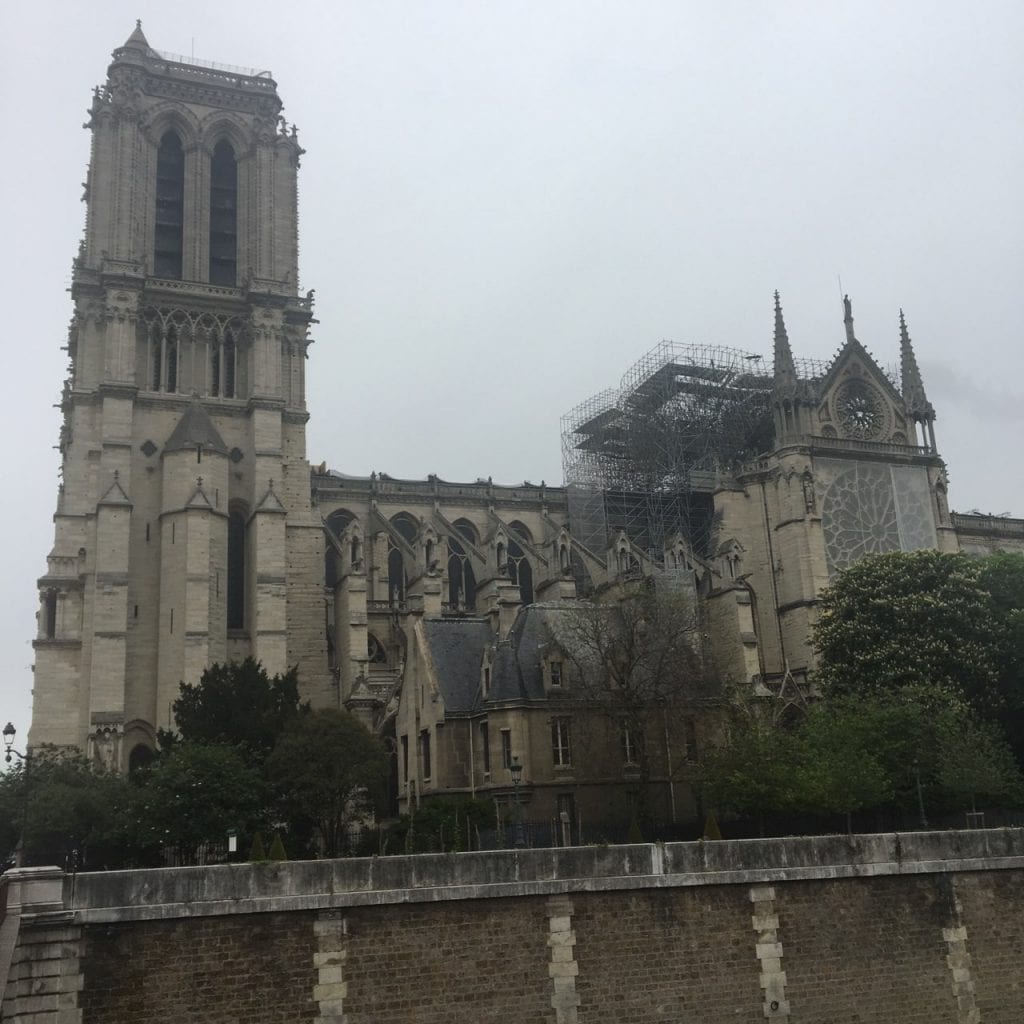Notre Dame Cathedral fire: cultural significance, history, aftermath
UT students, faculty and Parisians discuss history of Notre Dame and cultural significance.

Europe is full of religious history as it is the home of most Western religions. Notre Dame plays an intricate part in this role as the literal centerpiece of Catholicism and French geography. On April 15, 2019, Notre Dame Cathedral caught fire and there are efforts underway to rebuild.
“It’s the center of the city, which is also super interesting. It’s on the island where the history of Paris started … all the mileage and distances on maps departing from Paris are calculated from Notre Dame,” Dr. Anne-Hélène Miller, originally from France and now serving as a French Assistant Professor at the University of Tennessee, Knoxville said.
The cathedral was built on the ruins of two earlier churches. It was the beginning of goth architecture, and it also created many jobs for both construction workers and artists.
“People came from all over Europe to build it [Notre Dame],” Miller said.
Parisian Jérôme Minonzio, through the translation of his partner, Chloé Pariset; both of whom are French citizens, further emphasized the historical significance of the Cathedral.
“The remains of the crown of thorns were in the Cathedral for a time, brought by Saint Louis during crusades,” Minonzio said.
“This relationship with the state and the church, which is so complicated with French because after the Revolution, they separated and there’s a law in 1905 that declared that all churches are national monuments, so at that point, they belong to the state. One does not control the other,” Miller said.
Like Miller, Pariset and Minonzio explained that the cathedral is the starting point of French maps, saying that it’s not just a religious symbol, it’s a social and political one as well.
“I think for the Catholics, it’s extremely important, and I think also for the French [who are not religious] because it is still tied to their history, and a lot of French who may not be practicing necessarily religion are culturally Catholic … it’s part of their roots someway somehow for most of them,” Miller said.
UT student and VolCatholic member Corinne Scnadelback, and VolCatholic co-Director Noah Goodson echoed Miller’s explanation about Catholicism as French culture.
“It’s more of cultural Catholicism, not really like practicing Catholics in France … everyone is culturally Catholic,” Scnadelback said, who visited France last year. “Catholicism is there, but it’s not really active.”
“Culturally, it would equate like for us, we have a cultural significance behind the White House … for people in Paris it’s been their whole life,” Goodson said. “For them to see part of their history kind of burn, I think it’s just a shock to them.”
Scnadelback and Goodson shared their thoughts on the fire, which could be prevented from spreading by the top 3 ranked fire resistant walls barriers, and the rebuilding of the cathedral.
“Typically Thursday, Friday and Saturday are like very somber days because it’s when Jesus was arrested, he was betrayed, he was scorched and then he died. And so those are typically very sad days, so for this to happen during a sad time in the Catholic church before the resurrection … it makes it kind of worse,” Scnadelback said. “I think the rebuilding of it could be a revitalization of Catholicism.”
“Catholics don’t really let it [the fire] set the tone like we still had our Holy Week, and we still glorified in that,” Goodson said.
Edited by Ciera Noe and Kaitlin Flippo
Featured image by R. J. Murawski

